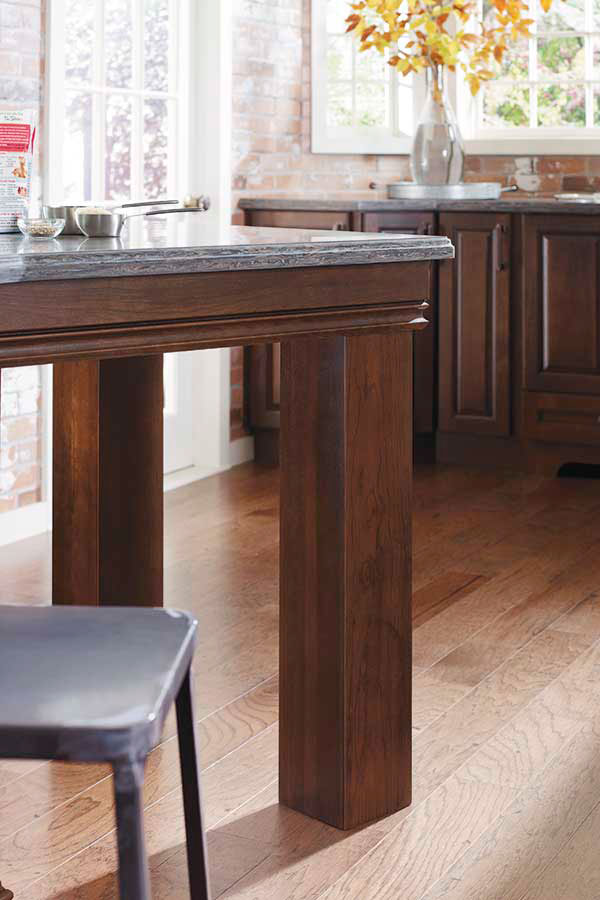Include Security and Elegance with Sturdy Legs For Kitchen Island Installations
Include Security and Elegance with Sturdy Legs For Kitchen Island Installations
Blog Article
Essential Factors to Consider When Selecting Legs For Cooking Area Island
Choosing the proper legs for a cooking area island includes a cautious assessment of numerous aspects that can substantially influence both functionality and visual charm. Among these, the choice of product plays a crucial role in ensuring longevity, while the layout should complement the existing style. Considerations such as height and weight assistance are necessary for stability and convenience. As we explore these components, it ends up being clear that each choice can have far-reaching effects for the overall kitchen experience. What subtleties should be thought about in each of these categories to accomplish the optimal balance?
Material Options
When selecting legs for a cooking area island, recognizing the various material alternatives is vital for achieving both aesthetic charm and structural stability (Legs For Kitchen Island). The choice of product substantially influences not only the longevity of the island yet also its total design and capability
Metal legs, typically made from stainless steel or wrought iron, contribute a commercial and contemporary feel while ensuring durability and security. These materials are resistant to put on and can sustain considerable weight, making them perfect for larger islands.
An additional option is crafted products, like MDF or plywood, which can be much more cost-effective while still offering a series of surfaces. They may not give the exact same level of security as strong wood or steel. Legs For Kitchen Island. Finally, products such as acrylic or glass can produce a contemporary appearance, though they may need additional assistance to ensure stability.
Ultimately, the option of material for kitchen area island legs should line up with the preferred functionality and the general motif of the kitchen area.
Design and Design

When considering design, the form and finish of the legs are essential. Tapered legs can give a sense of agility and elegance, while thicker, a lot more durable legs can convey toughness and security. Additionally, the surface-- be it repainted, stained, or natural-- must complement the cabinets and countertop products to develop a unified look.
Furthermore, the layout of the legs can additionally reflect personal taste. Customized or attractive legs, such as those including intricate carvings or special geometric forms, can work as prime focus, adding personality and individuality to the kitchen. Ultimately, the best option will certainly not just boost performance however likewise boost the aesthetic appeal, making the kitchen island a standout feature of the home.
Height Considerations
Picking the proper height for kitchen island legs is critical, as it straight impacts both performance and convenience. The conventional height for a cooking area island normally ranges from 36 to 42 inches, aligning with typical countertop elevations.

It is additionally important to represent customers' heights and choices. Customizing the elevation can ensure a comfy experience for all member of the family, making the kitchen island a much more enjoyable and practical room.
Weight Support
Making sure sufficient weight assistance for kitchen island legs is important for both safety and security and functionality. The cooking area island frequently serves numerous objectives, including food prep work, eating, and additional storage, requiring a durable assistance framework. When choosing legs, it is crucial to think about the general weight ability required based on the island's intended use and the products that will certainly be positioned on it.
The choice of material for the legs plays a considerable duty in their weight-bearing capacities. Strong timber, steel, and heavy-duty composites generally supply premium toughness contrasted to lighter products. Additionally, the design of the legs-- whether they are straight, tapered, or have a pedestal form-- can influence their capacity to distribute weight effectively across the structure.
Constantly consult the maker's specifications concerning load limitations to make certain that the legs can sustain the desired weight without jeopardizing safety and security. In recap, selecting cooking area island legs with adequate weight support is essential for developing a safe and functional culinary room.
Installment and Maintenance
Appropriate installment and upkeep of kitchen island legs are vital for making sure longevity and stability. This typically includes safeguarding the legs to the island base using appropriate bolts, making sure that the legs are degree and aligned.
Once set up, routine maintenance is needed to maintain the honesty and look of the legs - Legs For Kitchen Island. For wood legs, routine cleansing with a wet towel and application of ideal timber gloss can protect against dampness Read Full Article damages and keep their coating. Steel legs might call for a mild cleaning service to eliminate grease and grime, followed by a dry towel to avoid corrosion development
In addition, examine the legs routinely for indicators of wear or damage, such as splits or loose joints. Tightening screws or screws as required can likewise lengthen the life expectancy of the legs. By sticking to these setup and upkeep practices, home owners can make certain that their cooking area island stays tough and visually appealing for many years to come.
Final Thought

Aesthetic coherence is extremely important in picking the design and layout of legs for a kitchen area island, as these aspects substantially affect the general atmosphere of the space. Tapered legs can offer a sense of lightness and style, while thicker, a lot more robust legs can communicate toughness and security.Choosing the ideal elevation for cooking area island legs is essential, as it straight impacts both functionality and comfort. In recap, picking kitchen island legs with ample weight assistance is important for producing a useful and safe cooking area.
In final thought, picking legs for a kitchen area island demands cautious consideration of various variables, consisting of material options, style, height, weight support, and setup.
Report this page